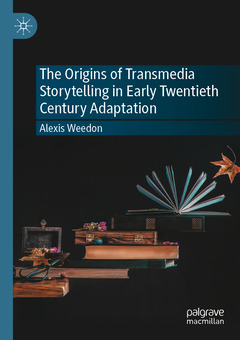The Origins of Transmedia Storytelling in Early Twentieth Century Adaptation, 1st ed. 2021
Auteur : Weedon Alexis

Moves some of the critically popular frameworks back to their historical origins in the early twentieth century
Makes a significant contribution to the area of adaptation studies
Goes back to the origins of transmedia storytelling
Date de parution : 06-2022
Ouvrage de 281 p.
14.8x21 cm
Disponible chez l'éditeur (délai d'approvisionnement : 15 jours).
Prix indicatif 73,84 €
Ajouter au panierDate de parution : 06-2021
Ouvrage de 281 p.
14.8x21 cm


